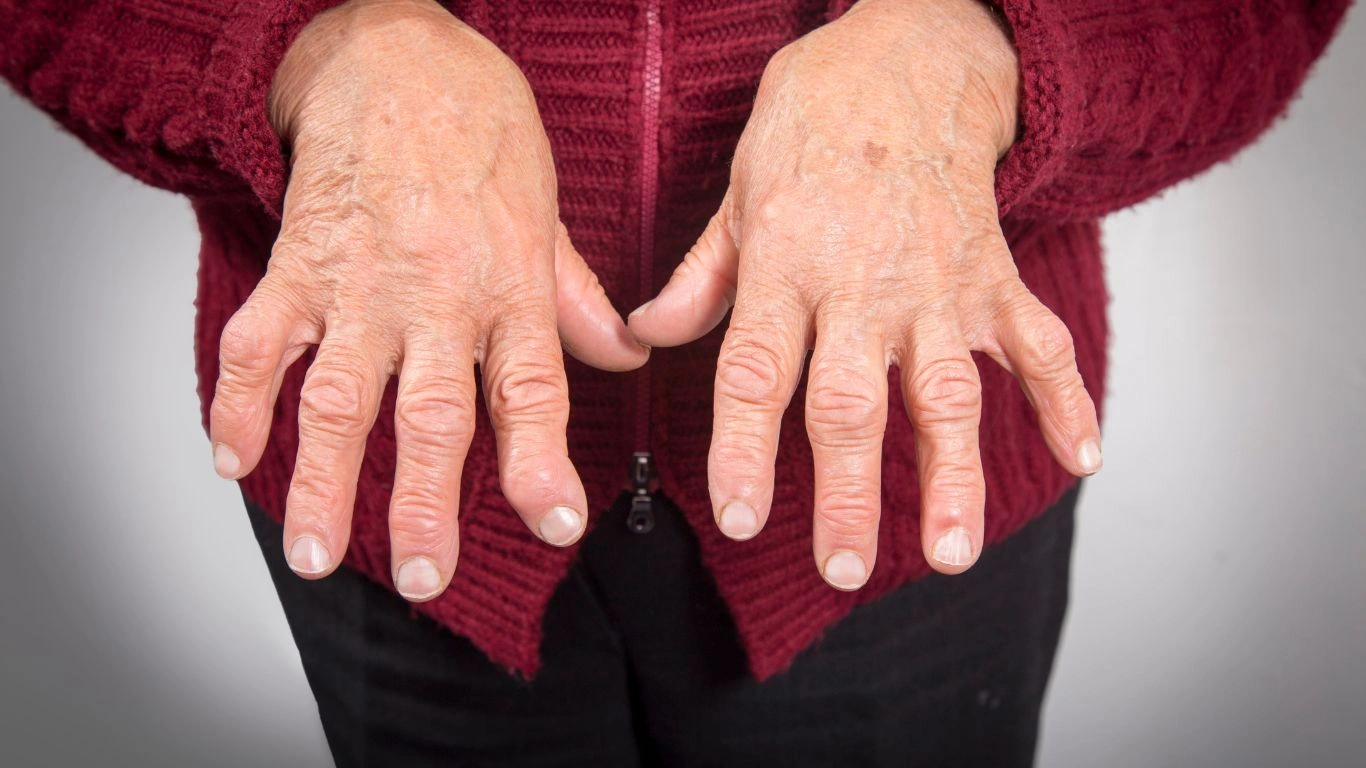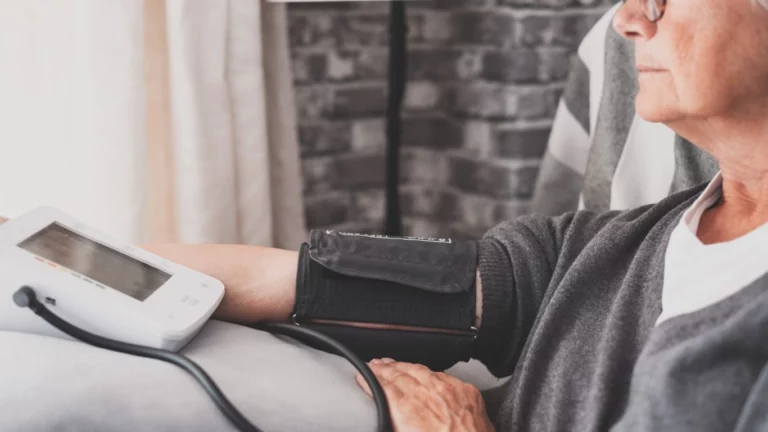Rheumatoid Arthritis & Resistance Bands: Boost Strength and Mobility
As a Rheumatoid Arthritis (RA) expert, I’ve seen firsthand how this condition can impact your daily life. The constant joint pain, stiffness, and swelling can leave you feeling stuck, wondering if you’ll ever find relief. But what if I told you that there are simple ways to manage and even alleviate some of those symptoms without relying solely on medications? One such method that has gained a lot of attention is the use of resistance bands. These flexible, portable tools might just be the game-changer you need in your battle with RA. So, let’s dive into how resistance bands can offer significant benefits for those of us living with rheumatoid arthritis.
The Connection Between Rheumatoid Arthritis and Exercise
Rheumatoid arthritis is an autoimmune condition where the body’s immune system mistakenly attacks the joints, causing inflammation. Over time, this inflammation can lead to joint damage and can severely restrict movement. As a result, staying active can often seem like a challenge, but I can assure you, movement is key to managing RA.
Exercise is not only important for maintaining overall health, but it also plays a crucial role in reducing inflammation and improving joint function for RA patients. Now, I know the idea of “exercising” with RA might sound intimidating at first—especially if you’re struggling with pain or stiffness—but let me reassure you that exercise doesn’t have to mean running a marathon or lifting heavy weights. Simple, low-impact exercises can be just as effective, if not more so. This is where resistance bands come into play.
What Are Resistance Bands and How Do They Help?
Resistance bands are flexible, elastic bands that provide resistance during exercises. They’re often used in physical therapy and fitness routines because of their ability to enhance strength, flexibility, and overall joint mobility. For individuals with rheumatoid arthritis, these bands can offer a unique combination of benefits.
Why should RA patients consider adding resistance bands to their routine? Well, let me break it down for you:
- Low-impact: Unlike traditional weightlifting or high-impact exercises that can put stress on already inflamed joints, resistance band exercises are gentle on your body while still providing an effective workout.
- Improves joint mobility: Resistance bands can help improve range of motion and flexibility, which are often compromised in RA patients due to swelling and stiffness.
- Builds strength: Consistent use of resistance bands can strengthen the muscles around your joints, helping to provide support and reduce the burden on the joints themselves.
- Portable and easy to use: One of the best things about resistance bands is how convenient they are. You can use them at home, at the gym, or even while traveling.

The Benefits of Resistance Bands for Rheumatoid Arthritis
When it comes to managing rheumatoid arthritis, it’s all about finding strategies that help reduce pain, maintain mobility, and improve quality of life. Let’s take a closer look at how resistance bands can specifically address some of the common issues faced by RA patients.
1. Reducing Joint Stiffness and Pain
One of the most frustrating aspects of RA is dealing with the stiffness that comes along with it. You know the feeling—the inability to fully straighten your arm or bend your knee without a sharp pang of discomfort. Resistance band exercises can help counteract that stiffness. Through controlled movements that gently stretch the muscles and joints, resistance bands encourage blood flow and help to increase flexibility, reducing stiffness over time.
For example, simple exercises like seated leg extensions or bicep curls with resistance bands can be done without putting too much strain on the joints, but still effectively target the muscle groups around the joints to alleviate pain and discomfort.
2. Building Strength for Joint Support
RA often leads to muscle weakness around the affected joints, as people tend to avoid using those muscles to prevent pain. However, this creates a vicious cycle where weakened muscles make the joints even more vulnerable. By using resistance bands to strengthen the muscles, you create better support around the joints, which can actually help reduce pain and prevent further damage.
Resistance bands offer a controlled way to progressively strengthen muscles. You can start with lighter resistance and gradually increase as your muscles adapt. Over time, you’ll notice better support and stability in your joints, helping to reduce the likelihood of injuries or flare-ups.
3. Increasing Flexibility
Flexibility is key to maintaining an active lifestyle, and it’s something many RA patients struggle with. Whether it’s difficulty reaching for something on a high shelf or bending down to tie your shoes, the reduced range of motion can be frustrating. Using resistance bands in targeted stretches can help increase flexibility and improve joint mobility.
Incorporating simple resistance band stretches into your daily routine, like shoulder stretches or hip flexor stretches, can make a noticeable difference in how your body moves and feels throughout the day.

How to Start Using Resistance Bands for RA
Starting with resistance bands may seem a bit daunting at first, but trust me, you don’t have to be a fitness expert to reap the benefits. Here’s a simple plan for getting started:
- Start slow: If you’re new to resistance bands, begin with the lightest resistance band you can find. Your goal is to ease into the exercises without overtaxing your joints.
- Consult with a professional: Before beginning any exercise routine, it’s always best to talk to your healthcare provider or physical therapist, especially when managing a condition like RA. They can recommend the best exercises tailored to your specific needs.
- Focus on form: Proper form is critical to prevent injury and get the most out of each movement. Don’t rush through exercises—take your time to focus on technique and controlled movements.
- Consistency is key: Aim for short, frequent sessions. You don’t need to work out for an hour every day; 15-20 minutes a few times a week can go a long way in improving your RA symptoms.
Common Exercises to Try
Here are a few resistance band exercises that I personally recommend for RA patients:
- Seated leg extensions: While sitting in a chair, loop a resistance band around your feet and extend one leg at a time, holding it for a few seconds before lowering it back down.
- Resisted shoulder presses: Stand with the resistance band under your feet, hold the handles at shoulder height, and press your arms upward, extending them fully before lowering them back down.
- Standing hip abductions: Tie the resistance band around your legs just above your knees, and then, standing upright, lift one leg to the side, keeping the movement controlled.

Progressive Resistance Training for RA: Taking It to the Next Level
Now that you have a good understanding of how resistance bands can help with rheumatoid arthritis, it’s time to talk about how you can progressively build strength and improve mobility. You see, RA doesn’t stay the same all the time—it fluctuates. Some days you might feel better, while other days could feel like a real struggle. The good news is, you don’t have to let those bad days control your journey. By gradually increasing the resistance and intensity of your band exercises, you can work towards managing your symptoms more effectively and building a more resilient body.
In my experience, taking small steps toward progress really does pay off in the long run. A common mistake many people make when they start exercising with RA is pushing too hard or too fast. I’ve seen patients who get discouraged because they think they’re not “working hard enough.” Trust me, when it comes to managing rheumatoid arthritis, it’s not about pushing through pain—it’s about consistency, patience, and listening to your body.
Understanding Progressive Resistance Training
Progressive resistance training means gradually increasing the amount of resistance as your muscles get stronger. You don’t have to jump into heavy lifting or complicated routines. The goal is to gently challenge your muscles so that they can adapt and grow stronger, without overloading your joints. Resistance bands are perfect for this because they come in a variety of resistance levels—from light to heavy—and allow you to progress at your own pace.
As you continue using the bands, you might notice that you can perform more repetitions or hold stretches for longer periods. This is a sign that your muscles are responding positively, and you’re making progress. I always tell my patients to celebrate the small wins, whether it’s adding a few more reps or simply feeling less stiff in the morning.

How to Track Your Progress
Tracking your progress doesn’t have to be complicated. Simple things like noting down how many repetitions you can do or how long you can hold a stretch can help you see how far you’ve come. Another great idea is to keep a journal about how your joints feel after each exercise session. Is the swelling less? Is the pain more manageable? These are signs that your body is responding well to your routine.
For instance, when I first began incorporating resistance bands into my treatment plan, I could barely hold a stretch for more than 15 seconds due to the pain in my shoulders. Fast forward a few months, and I was holding stretches for over a minute without discomfort. The improvement was gradual but noticeable, and that kept me motivated to stick with it. Over time, the muscles and joints around my shoulders strengthened, and the pain was significantly reduced.
Joint Protection and RA: How Resistance Bands Can Help
Let’s talk about joint protection. RA can make even simple tasks like opening a jar or climbing stairs feel like a monumental effort. That’s why it’s so important to focus on exercises that not only strengthen muscles but also protect your joints from further damage. Resistance bands can provide just the right amount of support during your workouts, helping you to avoid unnecessary strain on your joints.
When using resistance bands, you’re able to control the amount of force exerted on your joints. Unlike traditional weights, which can sometimes put undue pressure on the joints, the resistance bands allow you to adjust the tension and tailor the workout to your needs. This is a game-changer for RA patients because it reduces the risk of overloading the joints while still providing a challenge to your muscles.
Incorporating Joint Protection into Your Routine
Joint protection strategies are all about using your body in ways that reduce strain. Here’s how resistance bands help with that:
- Gentle resistance: The elastic nature of the band means you’re not working against hard, unyielding weights. Instead, you’re moving with the natural flow of your body, reducing the likelihood of overstretching or jerking movements that could cause injury.
- Controlled movements: You’re in control of how fast or slow you perform each exercise. This helps prevent sudden, sharp movements that can worsen pain or cause damage to the joints.
- Muscle activation: Resistance band exercises are excellent for activating smaller stabilizing muscles around the joints. This is important for providing joint support and reducing the chances of your joints “taking over” during movements.

How Resistance Bands Can Improve Everyday Function
Let’s face it—when you’re dealing with RA, everyday tasks can feel like a chore. Whether it’s reaching for something on the top shelf or walking for longer periods, RA can make even the simplest activities seem impossible. But resistance bands can help improve your ability to perform these tasks more efficiently and with less discomfort.
The beauty of resistance bands is that they’re versatile and can be used to mimic the movements you use in your daily life. So whether you’re lifting groceries, bending to tie your shoes, or stretching to grab something off the shelf, the exercises you do with resistance bands can translate into better function in your day-to-day routine.
Targeting Functional Movements
Functional movements are the everyday actions we perform, and the goal is to make them easier and less painful for you. With RA, your ability to perform functional movements is often compromised. But by using resistance bands in exercises that mimic these movements, you’re essentially retraining your body to move in a way that minimizes stress on the joints.
- Squats with resistance bands: Squats are an excellent functional movement because they engage your legs, hips, and lower back. Adding a resistance band makes it even more effective while keeping the movement gentle on your joints.
- Resistance band rows: This exercise targets your upper back and shoulders, helping to improve posture and arm strength, which are essential for lifting and carrying tasks.
- Hip abduction exercises: These movements mimic the action of walking or climbing stairs, helping to strengthen the hip muscles and improve mobility for these everyday activities.

The Power of Consistency
As with any exercise routine, consistency is the key to seeing results. When it comes to rheumatoid arthritis, managing your symptoms through exercise is not about quick fixes. It’s about building a long-term habit that supports your joints and improves your quality of life. And this is where resistance bands shine.
Incorporating resistance band exercises into your daily or weekly routine doesn’t require a lot of time—just 10-20 minutes a few times a week can make a significant difference. I’ve worked with many RA patients who found that after just a few weeks of consistent practice, they felt more mobile, experienced less pain, and had more energy throughout the day.
So, even if you’re having a rough day with your RA, try to stick with your routine. Start slow, stay consistent, and over time, you’ll notice improvements in both your physical function and your overall well-being. Remember, it’s not about perfection—it’s about progress.
Enhancing Mental and Emotional Health with Resistance Bands
Living with rheumatoid arthritis isn’t just a physical challenge—it’s an emotional one too. The ups and downs of dealing with pain, fatigue, and limited mobility can weigh heavily on your mental health. That’s why finding ways to boost both your physical and emotional well-being is so important. In my experience, exercise—especially when combined with resistance bands—has proven to be one of the most effective tools for improving not just physical function, but mental and emotional health as well.
Many RA patients I’ve worked with have reported feeling better overall after incorporating exercise into their daily routine, particularly resistance band exercises. There’s something incredibly uplifting about feeling stronger and more capable. It creates a sense of accomplishment and empowerment, which can counterbalance the mental toll of RA. Plus, exercise helps release endorphins—those natural mood boosters that help reduce stress and anxiety. This is a win-win situation!
How Exercise Affects Mental Health in RA Patients
The connection between exercise and mental health has been well-documented. For those living with chronic conditions like rheumatoid arthritis, this connection is even more vital. When you’re in constant pain or dealing with unpredictable flare-ups, it can be easy to fall into a mental slump. However, incorporating regular exercise, even in the form of gentle resistance band routines, can significantly improve your mood and outlook on life.
Exercise helps with mental health in several key ways:
- Improved mood: Physical activity, like resistance band exercises, stimulates the release of endorphins, which can reduce feelings of depression and anxiety. I’ve seen firsthand how regular movement can boost confidence and bring a smile to a patient’s face, even on their toughest days.
- Reduced stress: Exercise helps lower cortisol, the stress hormone, in your body. For RA patients, stress can often trigger flare-ups, so managing it is crucial for controlling symptoms. Resistance band exercises offer a great way to release built-up tension and clear your mind.
- Better sleep: Regular physical activity also improves the quality of sleep, which is often disrupted in people with RA. When you exercise, your body tires in a healthy way, making it easier to fall asleep and stay asleep, allowing your body to rest and repair itself.
- Increased self-esteem: As you see progress with your exercise routine, whether it’s gaining strength or improving flexibility, you naturally feel more positive about yourself. This confidence boost can help break the mental chains that RA sometimes places on you.

Creating a Balanced, Sustainable Routine with Resistance Bands
When it comes to managing rheumatoid arthritis, finding balance is key. You want a routine that challenges your body, but that doesn’t leave you exhausted or in more pain. In my experience, the most successful RA treatment plans are those that are balanced—incorporating exercise, rest, healthy eating, and stress management. And the beauty of resistance bands is that they offer a low-impact, adjustable way to strengthen and stretch your muscles, all while being easy on your joints.
The secret to sticking with a routine is making sure it fits seamlessly into your lifestyle. You don’t need to spend hours at the gym or overexert yourself every day. Consistency is much more important than intensity. Aim for short, frequent sessions, and over time, you’ll notice significant improvements in your joint mobility, strength, and overall well-being. I always recommend that my patients listen to their bodies—if a particular exercise feels too difficult, back off a bit, or try a lighter resistance band. The goal is gradual, steady progress.
Creating a Routine That Works for You
Here are a few tips to help you create a sustainable resistance band workout routine that fits your needs:
- Start with the basics: Begin with simple exercises that target your major muscle groups. For example, seated leg extensions, banded shoulder presses, or hip abductions are great starting points. These exercises will help you build a foundation.
- Set realistic goals: Focus on small, achievable goals. Maybe you’ll aim to do a certain number of repetitions or hold a stretch for a few extra seconds. Tracking your progress, as mentioned earlier, will keep you motivated.
- Listen to your body: Pay attention to how your body feels during and after each session. If you experience sharp pain or discomfort, ease off and adjust the exercise or resistance level. Remember, it’s okay to take breaks and adjust as needed.
- Consistency over intensity: It’s better to exercise a few times a week consistently than to push too hard and risk injury. Even 10-15 minutes a few times a week can bring noticeable results.

Final Thoughts: Empowering Yourself with Resistance Bands
Resistance bands are a fantastic, accessible tool for anyone dealing with rheumatoid arthritis. From improving joint mobility and strength to boosting mental health, these bands can help you regain control over your body and your life. But it’s important to remember that consistency, patience, and a little bit of creativity are key. You don’t need to push yourself too hard—small, gradual steps will get you to your goals over time.
As someone who has seen the difference exercise can make in the lives of RA patients, I can tell you that resistance bands are more than just a tool for physical improvement—they’re a path to emotional and mental well-being as well. They can give you the strength to keep moving, both literally and figuratively. So don’t be afraid to give them a try!
Disclaimer:
The information provided in this article is for educational purposes only and is not intended as a substitute for professional medical advice. Always consult with your doctor or a healthcare provider before beginning any new exercise routine, especially if you have a medical condition like rheumatoid arthritis.
References:

Tarra Nugroho is a dedicated Nurse Practitioner with a strong foundation in family and preventive care. She brings both compassion and clinical expertise to her practice, focusing on patient-centered care and health education. As a contributor to Healthusias.com, Tarra translates medical knowledge into clear, empowering articles on topics like women’s health, chronic disease management, and lifestyle medicine. Her mission is simple: help people feel seen, heard, and informed—both in the clinic and through the content she creates. When she’s not caring for patients, Tarra enjoys weekend hikes, plant-based cooking, and curling up with a good health podcast.





